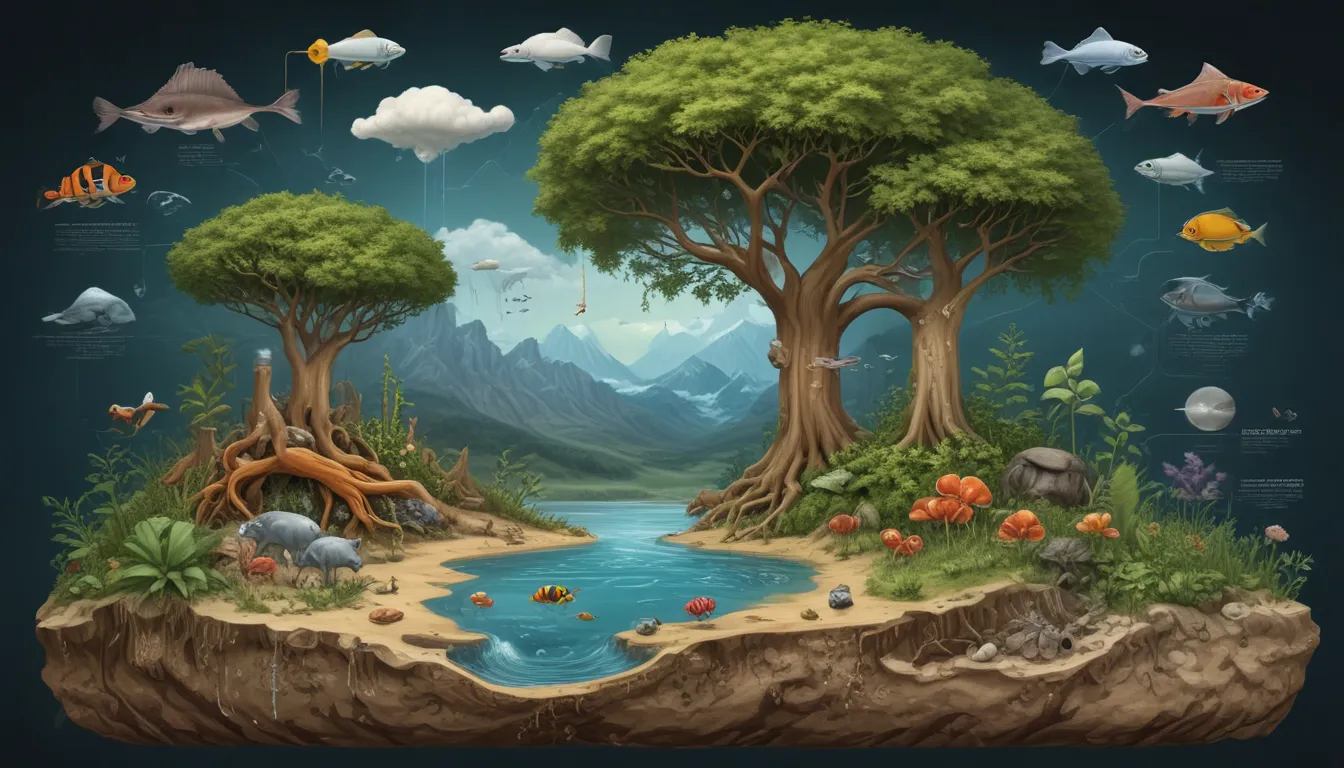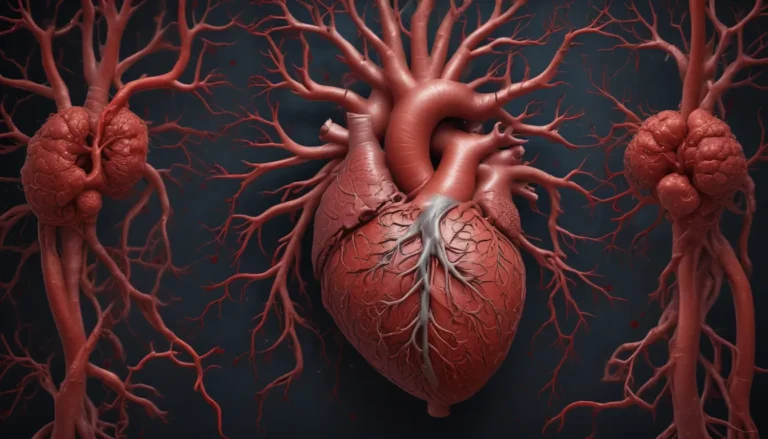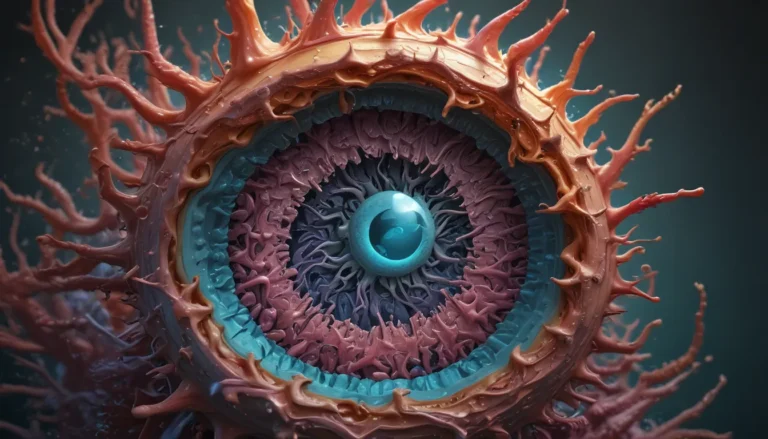A Note About Images: The images used in our articles are for illustration purposes only and may not exactly match the content. They are meant to engage readers, but the text should be relied upon for accurate information.
Welcome to the captivating realm of the nitrogen cycle, a fundamental process that sustains life on Earth and fosters the health of our ecosystems. From nitrogen fixation to denitrification, this cycle encompasses a series of intricate mechanisms that keep our planet thriving. Join us on a journey through the fascinating world of the nitrogen cycle as we unveil 12 intriguing facts about this essential process.
Unveiling the Vitality of the Nitrogen Cycle
The nitrogen cycle stands as a cornerstone in the sustenance of life on our planet, orchestrating the transformation of nitrogen into various forms that nourish different organisms. This intricate process plays a pivotal role in supporting the growth and vitality of plants and animals.
The Majesty of Nitrogen Gas in Earth’s Atmosphere
Behold the majesty of nitrogen gas (N2), comprising a staggering 78% of Earth’s atmosphere. Despite its abundance, atmospheric nitrogen is not readily accessible to most organisms, necessitating a series of transformative steps in the nitrogen cycle.
Nitrogen Fixation: A Game-Changing Process
Enter the realm of nitrogen fixation, a key process that converts atmospheric nitrogen into a usable form through the symbiotic relationship between certain bacteria, such as Rhizobium, and leguminous plants. This transformative step kickstarts the circulation of nitrogen within ecosystems.
Legumes: Nature’s Nitrogen Fixers
Marvel at the role of legumes, such as peas, beans, and clover, in nitrogen fixation. These plants host nitrogen-fixing bacteria in nodules on their roots, facilitating the conversion of atmospheric nitrogen into ammonium, a vital nutrient for plant growth.
Denitrification: Completing the Nitrogen Cycle
Witness the marvel of denitrification, where specific bacteria convert nitrates or nitrites back into atmospheric nitrogen, bringing the nitrogen cycle full circle. This process maintains a delicate balance of nitrogen in ecosystems, ensuring the continuous availability of this essential element.
The Essence of Nitrogen in DNA and Proteins
Delve into the essential role of nitrogen in DNA, RNA, and proteins, the foundational building blocks of life. Without an ample supply of nitrogen, plants and animals cannot thrive and fulfill their biological functions.
Fertilizer Runoff and Algal Blooms
Contemplate the repercussions of excessive nitrogen-based fertilizer use, which can result in harmful algal blooms in water bodies. This runoff depletes oxygen levels, posing a threat to aquatic ecosystems and signaling the importance of mindful nitrogen management.
The Revolutionary Haber-Bosch Process
Marvel at the innovation of the Haber-Bosch Process, a groundbreaking method developed in the early 20th century that enabled the industrial-scale production of ammonia from atmospheric nitrogen. This advancement significantly boosted agricultural productivity, shaping modern farming practices.
Nurturing Soil Fertility Through the Nitrogen Cycle
Explore how the nitrogen cycle enriches soil fertility by decomposing organic matter and releasing ammonia and other nitrogen compounds. This natural process replenishes essential nutrients in the soil, fostering optimal conditions for plant growth and ecosystem health.
The Interplay Between Nitrogen Cycle and Climate Change
Reflect on the intricate relationship between the nitrogen cycle and climate change, as excessive nitrogen compound releases contribute to environmental challenges, such as climate change and ozone layer depletion. Effective nitrogen cycle management is critical in addressing these pressing issues.
Symbiotic Bonds Between Nitrogen-Fixing Bacteria and Plants
Marvel at the symbiotic relationships forged between nitrogen-fixing bacteria and plants, where plants receive usable nitrogen compounds in exchange for energy-rich carbon compounds. These alliances underscore the interconnectedness of organisms within ecosystems.
Biodiversity Flourishes with the Nitrogen Cycle
Witness how the availability of nitrogen in diverse forms nurtures the growth of a myriad of plant species within ecosystems, creating habitats and food sources that support a rich tapestry of animal life. The nitrogen cycle serves as a pillar for biodiversity and ecosystem resilience.
In exploring these 12 fascinating facets of the nitrogen cycle, we unveil the intricate workings of this essential process that upholds the balance of Earth’s ecosystems and the vitality of all living beings.
Embracing the Marvels of the Nitrogen Cycle: A Path to Enriched Understanding
The nitrogen cycle stands as a cornerstone in the sustenance of life on our planet, orchestrating the transformation of nitrogen into various forms that nourish different organisms. This intricate process plays a pivotal role in supporting the growth and vitality of plants and animals.
As we gaze upon the awe-inspiring beauty of nitrogen gas, delve into the transformative wonders of nitrogen fixation, and contemplate the harmonious interplay between organisms within ecosystems, we gain a deeper appreciation for the subtle yet profound mechanisms that sustain life on Earth.
FAQs on the Nitrogen Cycle
- What is the significance of the nitrogen cycle?
-
The nitrogen cycle plays a vital role in maintaining healthy ecosystems and supporting the growth and survival of organisms by ensuring the availability of nitrogen in various forms.
-
How does nitrogen fixation occur in nature?
-
Nitrogen fixation occurs through biological processes involving nitrogen-fixing bacteria and certain plants, as well as non-biological processes facilitated by industrial methods.
-
What are the key steps of the nitrogen cycle?
-
The nitrogen cycle encompasses essential steps such as nitrogen fixation, nitrification, assimilation, ammonification, and denitrification, each contributing to the conversion of nitrogen into usable forms.
-
What environmental challenges are associated with human impacts on the nitrogen cycle?
-
Human activities, such as industrial farming and the use of nitrogen-based fertilizers, have disrupted the nitrogen cycle, leading to pollution, ecological imbalances, and climate change.
-
How can we contribute to the preservation of the nitrogen cycle?
- By practicing sustainable agriculture, reducing fertilizer use, and promoting ecosystem conservation, we can help protect the delicate balance of the nitrogen cycle and support the health of our planet.
In unraveling the mysteries of the nitrogen cycle, we embark on a journey of discovery and enlightenment, deepening our connection to the wondrous web of life that sustains us all. Join us in celebrating the marvels of the nitrogen cycle and embracing a newfound reverence for the intricate processes that shape our world.






